What is SDelete? How to securely delete your files with SDelete in Windows 10/8/7? This post written by MiniTool describes this free command-line utility in detail. Just read it to know much information, as well as an SDelete alternative for wiping data permanently.
You may choose to delete any file on a hard drive by Shift+Delete keyboard combination. But this way won’t remove the data actually from the drive and Windows only removes the index for that file in the file system. The space that the file occupies is available again for write operations.
Once the space is overwritten partially or fully, the file is unrecoverable. However, you cannot know when that will happen; files that have been deleted months ago may be still available. Due to some reasons, this is bad. For example, you need to sell your PC or give it away but the new owner could use file recovery software to recover them, which leads to privacy leak.
To securely delete files permanently, Microsoft has a command-line utility – SDelete.
What Is Sysinternals SDelete?
This Windows tool can help you to securely delete existing files and any file that exists in the unallocated portions of a hard drive (including deleted and encrypted files). Once your file is erased with this utility, it is gone forever and cannot be recovered although you use the professional data recovery software – MiniTool Power Data Recovery.
Microsoft SDelete uses the Department of Defense standard DOD 5220.22-M for handling classified information and it relies on the Windows defragmentation API to see which disk clusters hold deleted files.
Suggestion: Back up Files Before Using SDelete
As said before, files deleted by SDelete are unrecoverable. Before performing the deletion operation, we suggest backing up your important files since sometimes data loss is caused by mistaken operation. In addition, before selling your PC or throwing it away, you should also make sure your critical data is backed up.
How can you back up your disk data? A free backup software – MiniTool ShadowMaker can be your good assistant. This program can help you easily create a backup for your vital data via two methods: imaging backup and file sync.
The first option means the selected files will be compressed into an image file and you should perform a file restoration if you need to use it. File sync means the original folder and target folder are identical and you can directly use files.
Just get MiniTool ShadowMaker by hitting the download button and start a file backup. Here, we will take file sync as an example.
MiniTool ShadowMaker TrialClick to Download100%Clean & Safe
1. Double-click the icon of MiniTool ShadowMaker on your computer to run this program.
2. Go to the Sync page and choose files you want to back up by entering the Source section.

3. Click Destination to choose a path for the source contents – a USB flash drive, external drive, and shared folder can be OK.
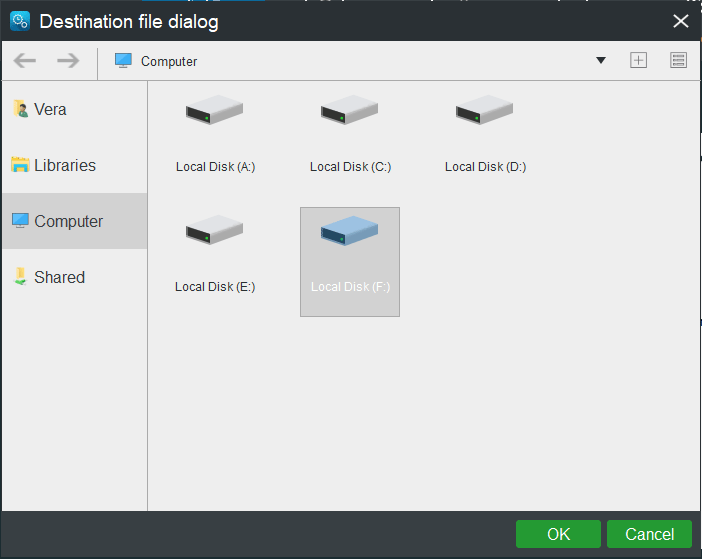
4. After finishing the selections, click Sync Now to start the sync operation.
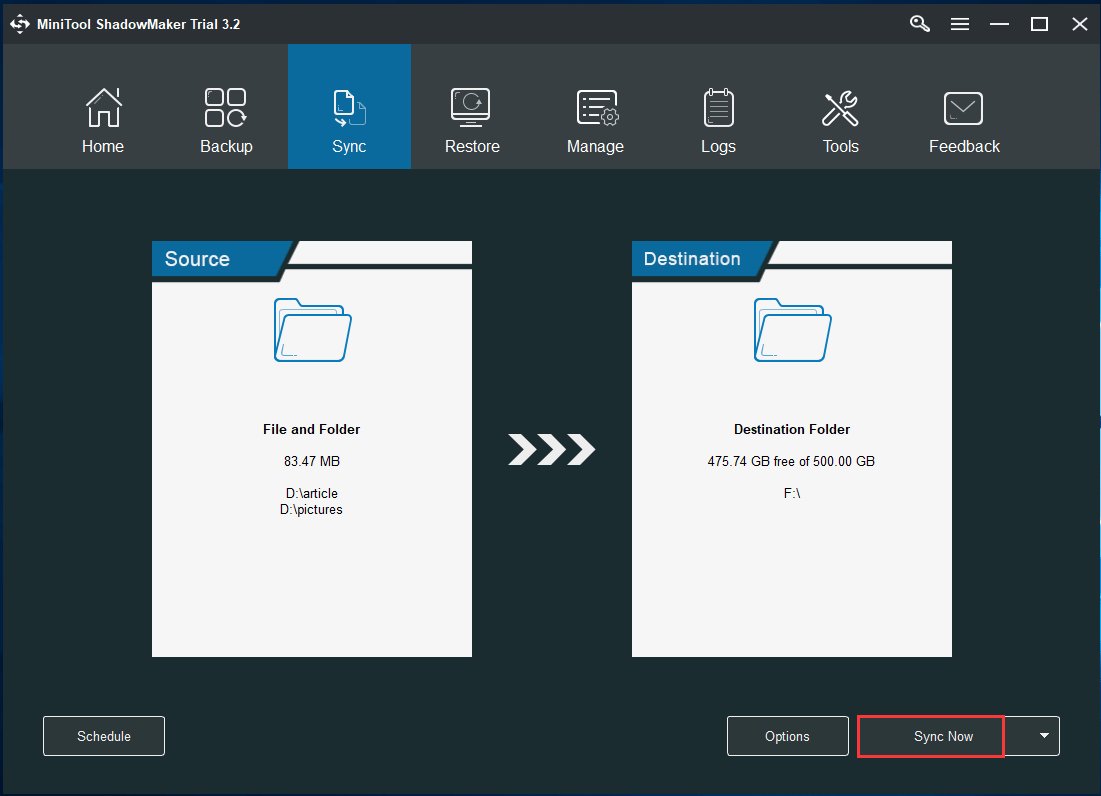
After finishing file backup, now you can perform the file deletion with SDelete. The following is how to use this command-line tool.
How to Use SDelete in Windows 10/8/7?
Download and Add SDelete
1. Download
Windows SDelete is downloadable. You can go to the Microsoft SDelete page and get this utility via the download link.
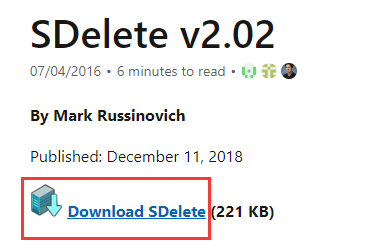
2. Add SDelete to CMD
This tool doesn’t have a traditional installer. Instead, the downloaded file is a .zip file that contains two executable files – sdelete.exe for 32-bit versions and sdelete64.exe for 64-bit versions. Some of you may choose to directly double-click the .exe file. Actually, this doesn’t work.
To use SDelete in Command Prompt (CMD), you need to make some settings by following the instructions.
1. Extract the file to a folder called SDelete. You can put the folder to your desktop or the path – C:\Program Files.
2. Right-click on This PC in File Explorer and choose Properties.
3. In the new window, click Advanced system settings.
4. Under the Advanced tab, click Environment Variables.
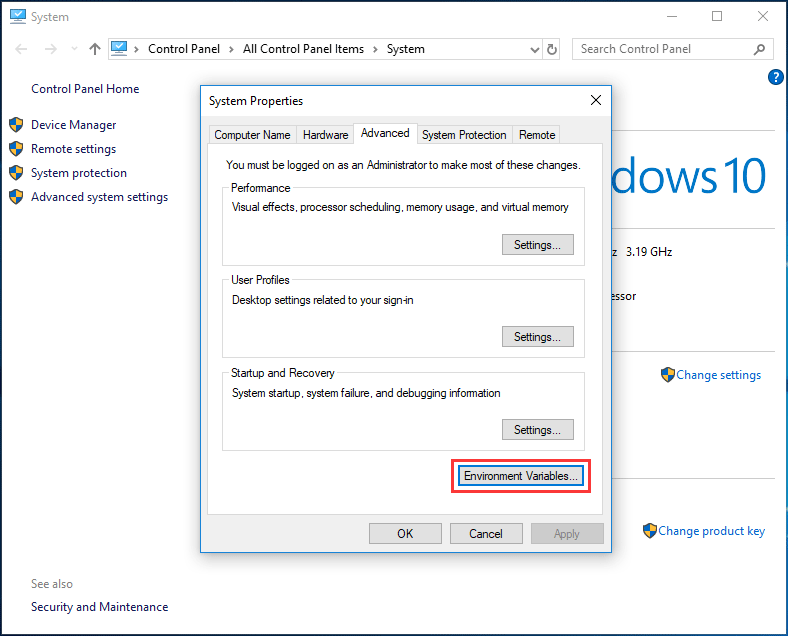
5. Click Path from System variables and click Edit.
6. In the new window, click New and Browse to find the SDelete folder and add it to the list.
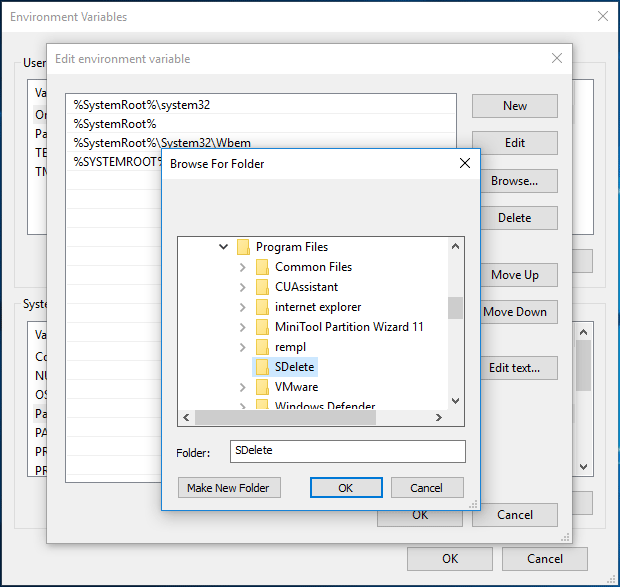
7. Finally, click OK three times to save your change.
Now, you can run Command Prompt to use SDelete to delete your files or folders.
How to Use SDelete to Delete Files
According to Microsoft, this command-line utility allows you to delete one or more files and directories. Also, you can clean free space on your logical disk. It accepts wild card characters as part of the file specifier or directory.
When you press Windows + R, input cmd in the Run window and click OK to run Command Prompt. Then, type the sdelete command and press Enter. You will get the following figure, showing you some parameters.
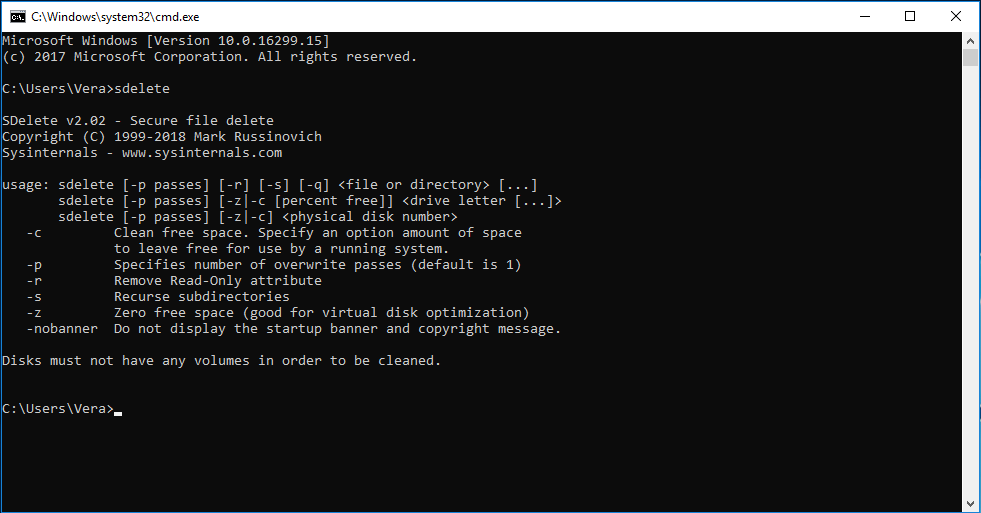
-c: Clean free space and specify an option amount of space
-p: Specifies number of overwrite passes (default is 1)
-r: Remove Read-Only attribute
-s: Recurse subdirectories
-z: Zero free space (good for virtual disk optimization)
Now, let’s see some Sdelete examples.
Delete files or folders securely
sdelete -s D:\pictures — This deletes the pictures folder and all subdirectories securely that locate in D drive.

To delete a single file on the desktop, use these commands:
cd desktop
sdelete –p 2 test.txt
This deletes the test.txt file on the desktop and runs the operation in two passes.
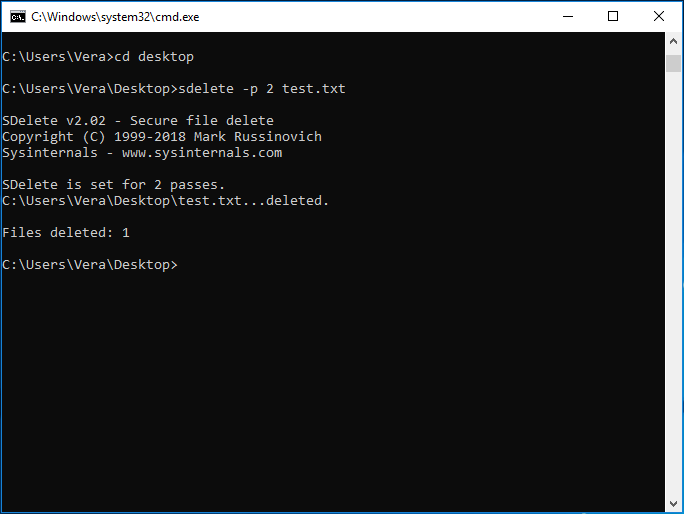
Simply put, all the SDelete commands for delete files should rely on the base: sdelete [-p passes] [-s] [-q] <file or directory>.
Delete free disk space securely
sdelete –c c: — This deletes the free space of C drive and won’t impact existing files.
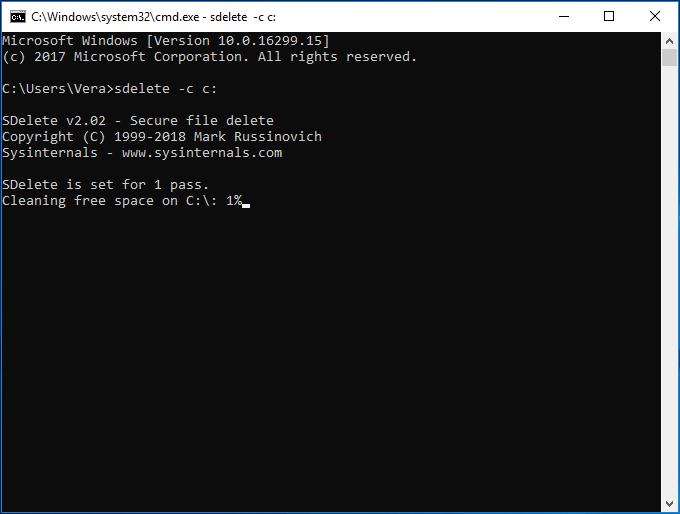
sdelete –c –p 3 f: — This runs three delete passes on the free disk space of F drive.
sdelete –z d: — This zeroes the free disk space of D drive. This benefits virtual disk optimization.
Of course, all the operations here should reply on the command: sdelete [-p passes] [-z|-c] [drive letter]. For deleting free disk space, this may take some time to complete. It is fairly fast to delete individuals files but if you run the operation on large folders or free space of the hard drive, it may take hours or even longer.
After finishing deletion, you can run data recovery software to check if your files can be recovered. Without a doubt, they are unrecoverable.
Sdelete Alternative – MiniTool Partition Wizard
After reading the above information on SDelete, you should know it is so complicated. If you are not a professional, it is best to not use this utility to delete your files permanently since the commands you input may be incorrect or you don’t know how to use SDelete although you have read this post. Sometimes you may be bothered by the SDelete access denied issue.
In these cases, it is necessary to look for an alternative to SDelete to erase your data. Well then, which one should you use? MiniTool Solution has such a tool and it is MiniTool Partition Wizard.
As a partition manager, it has many powerful features, such as resize/extend/format/delete partition, etc. Additionally, it can be a professional eraser since its Wipe Partition and Wipe Disk features can help you erase a specific partition or disk permanently. And all the data on the target drive cannot be recovered even if you use a data recovery program.
Right now, get this wipe tool by hitting the download button below and then install it on your Windows 10/8/7 computer.
MiniTool Partition Wizard FreeClick to Download100%Clean & Safe
1. Double-click on the icon of MiniTool Partition Wizard to launch it.
2. Click the Launch Applications section to the main interface.
3. Choose the target partition and select Wipe Partition from the Partition Management menu.

4. In the pop-up window, you can see this eraser offers 5 wiping methods; you should choose one and click OK to continue.
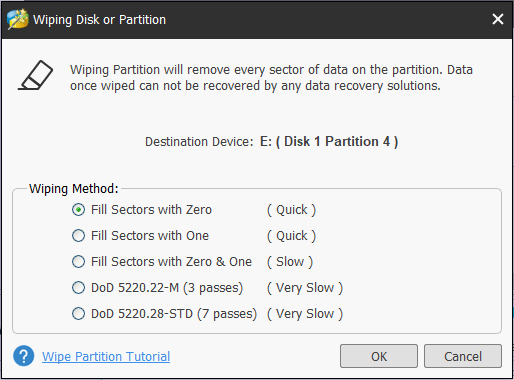
As for the wiping methods, each one gets a different result and take uneven time. MiniTool Partition Wizard wipes partition by repeatedly filling sectors or writing 3/7 times. For example, if you choose one of the first three methods, you can fill each sector with 1, 0 or 1 & 0. For the latter two methods, you should know they can get the best effect but take longer time comparatively.
5. When returning to the main interface, the partition has become unformatted. Just click Apply to let the change take effect.
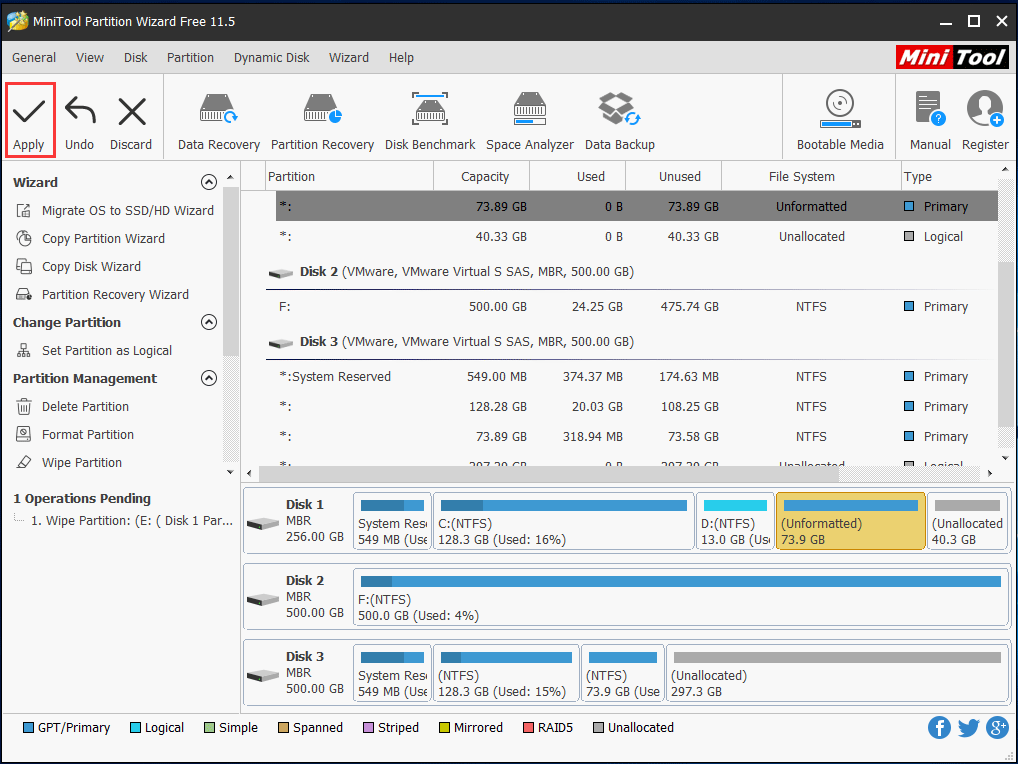
After finishing all the operations, you can format the target partition and write new data to the place. Additionally, you can wipe the entire disk with this hard drive eraser if you don’t want the whole disk data. For more information on the operation, refer to our previous post – How Do I Wipe Disk with A Free Hard Drive Eraser.
MiniTool Partition Wizard FreeClick to Download100%Clean & Safe
Bottom Line
What is SDelete? How to use SDelete in Windows 10/8/7? After reading this post, you know much information on this command-line tool offered by Microsoft. It is pretty difficult to use this utility if you are a common user. To easily erase your data enduringly, use its alternative – MiniTool Partition Wizard.
If you experience any question when wiping disk or partition with our software, don’t hesitate to contact us via [email protected] or leave your idea in the comment part below. Besides, any suggestion is also welcome. And we will reply to you as fast as we can. Thanks in advance.
SDelete FAQ
- Run SDelete to delete files permanently.
- Use the Wipe feature of MiniTool Partition Wizard.
- Additionally, you can try other ways and this post – 6 Effective and Reliable Methods to Delete Files Permanently may be what you need.
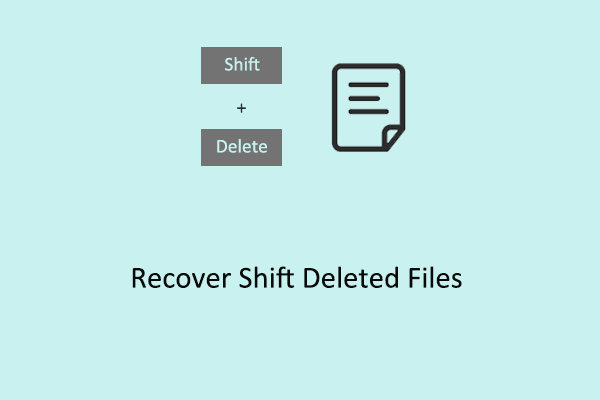
User Comments :